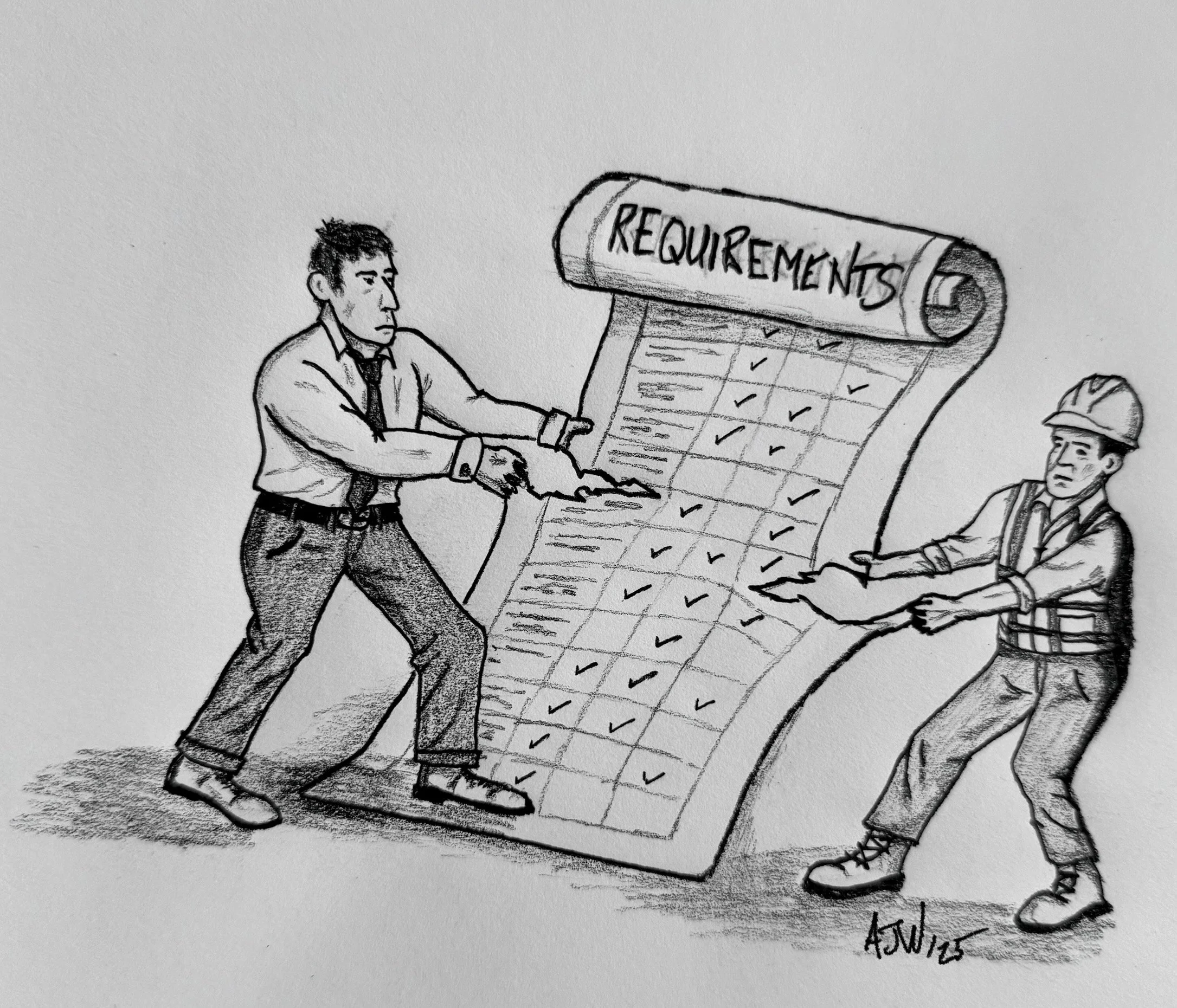When Alignment Fails…and We’re Too Proud to Admit It
A few weeks ago, I made the bold statement that digital transformations fail due to a lack of alignment between those leading the change and those affected by it.
This week, I’ll prove it to you. Let’s talk about the time I watched a multi-billion-dollar tech company totally botch a ConTech transformation in slow motion.
Yep, that tech company.
But more importantly, we’ll talk about the lessons learned and how you can avoid a similar fate.
What Misalignment Looks Like in Real Life
It was 2019 and I was tasked to lead the selection and rollout of a new project management platform for a massive construction program. We’re talking some of the most complex, expensive and fast-moving projects on earth.
By the time I showed up, the process was already a little messy. The internal teams had been stuck in analysis paralysis for months. They thought they had a solution, but too many opinions, too many conflicting goals and zero alignment had them second guessing the choice.
The core issue was the two major players at the table:
The Construction Management Team—the boots-on-the-ground users who desperately needed a system to simplify processes, manage risk and actually help them build.
The Internal Support Group—a team of developers whose job was to build custom tools for anything off-the-shelf solutions couldn’t handle. They were smart, experienced and motivated to stay busy. The more complex the tech, the more job security they had.
We did exactly what you would expect us to do, kicking off the process with a long, exhaustive list of requirements, evaluating the biggest names and eventually shortlisting our top two for a head-to-head, two-day deep dive. No PowerPoints, just hard demos showing exactly how they’d solve every requirement.
When the dust settled, the choice was clear to the people who mattered most.
The construction management team (those actually building) unanimously recommended an out-of-the-box solution that met their needs, required minimal customization and would immediately make life easier in the field.
The developers hated it. They pushed hard for the legacy, hyper-configurable system that was clunky, slow and difficult to use. But hey, they could make it what the construction team wanted by keeping their team busy.
In an attempt to break the stalemate, we brought in an independent third party to audit the evaluation. They sided with the construction team. It was a better fit, faster ROI and lower long-term risk.
But leadership? They sided with the developers and picked the old system.
That was six years ago. The system has been mostly a disaster. It launched late, the field teams hated it, the costs overran and the custom development became legendary. It has become the definition of a sunk cost failure: too expensive to abandon, too broken to succeed.
You Can’t Blame the Tech
So, back to the key point here, this was never a technology problem. Despite the age and complexity of the software in this particular situation, it was still a viable product.
Just not viable for that use case.
No, this wasn’t the tech’s fault, this was a major alignment problem. And no amount of AI, automation or shiny apps can save a project when leadership refuses to listen.
When this happens, like in the story about, typically the warning signs are there:
Political turf wars between groups
Overcomplicated requirements lists
Users getting overruled by internal power players
Leadership ignoring their own people
But this wasn’t just our problem. The more I meet with people across construction at conferences and in trailers, the more evident it has become that this is widespread across the industry.
Digital transformations go wildly over budget because of rework, broken processes or outright abandonment. Field teams spend more time entering data, not less and soon after spreadsheets and sticky notes make a comeback.
Teams lose trust. Morale craters. The best talent quits.
Bad systems lead to bad data, audit risks and legal headaches. Vendors, subcontractors and even clients get anxious as no one wants to partner with a tech train wreck.
Finally, leadership gets trapped, throwing good money at bad results, too embarrassed to admit they chose wrong.
Avoiding the Hard Lessons of Failed Digital Transformations
Let’s be real. This story isn’t unique. It may be bigger, louder and more expensive than most, but every failed tech rollout leaves behind the same wreckage.
But also, the same set of painfully obvious lessons we somehow keep ignoring.
Here are the common failure patterns I’ve seen (and lived), along with the lessons every construction leader needs to take to heart before their next digital transformation:
Lesson #1: If You Ignore the End Users, You’ll Pay for It Later
Our users (the construction managers) knew what they needed. They were clear, consistent and unanimous. Yet, they were ignored and the result was millions wasted on a system nobody wanted to use.
Avoid this trap: If the people actually doing the work aren’t driving the decision, don’t be shocked when they refuse to adopt it later.
Lesson #2: Internal Turf Wars Will Sink You Faster Than Bad Tech
Sometimes there are people who don’t necessarily focus on the best solution, but rather what’s best for them. That’s how you end up with decisions based on politics, not performance.
Avoid this trap: Sniff out the hidden agendas early. If you can’t get key stakeholders aligned on common goals, your project is already dead…you just haven’t buried it yet.
Lesson #3: Don’t Outsource Accountability to Third Parties
We brought in a consultant to break the tie. They agreed with the users and leadership still ignored the advice.
Avoid this trap: While consultants can guide, they can’t lead for you. If leadership won’t own the outcome, even the best recommendations won’t save you.
Lesson #4: Overcomplicating Kills Momentum
The configurable platform we picked became so complicated that it required a team of specialists just to keep it upright. Years later, it still doesn’t work like it should.
Avoid this trap: Simple wins. Always. If a platform can’t deliver immediate value without an army of coders, that’s not a platform. That’s a future problem disguised as flexibility.
Lesson #5: The Sunk Cost Fallacy Is Real (and Ruthless)
After spending years and millions on a disaster, there’s no turning back. Pride, politics and embarrassment kept people locked in.
Avoid this trap: Have a kill switch. Set clear milestones, timelines and go/no-go checkpoints before you spend the money. No exceptions.
Lesson #6: Bad Data = Bad Decisions (at Scale)
A failed system isn’t just expensive, it creates inaccurate reports, bad forecasts and even more manual workarounds. Multiply that across all projects and the risk compounds fast.
Avoid this trap: Prioritize clean, connected structured data from day one. Without it, your technology is just plain dangerous.
Lesson #7: Without Change Management, It’s All Just Shelfware
No amount of coding can fix a team that’s been blindsided by change and left to figure it out alone.
Avoid this trap: Train, support and communicate relentlessly. If people aren’t prepared and supported, they’ll abandon the system. Then you’ll be right back where you started.
The Bottom Line?
Digital transformations fail for the same reasons almost every time.
No alignment.
No accountability.
No focus on people.
And no amount of money, technology or consulting hours can overcome that. So, if you’re not ready to lead your people through the change, don’t start it. Because once you do, there are only two possible outcomes:
Shared success…
…or shared regret.
Don’t be like us.
Construction is cool, tell your friends!

